515 tornado deaths so far in 2011.
47% died in mobile homes
26% of these victims died in the Joplin tornado
2008: last strong La Nina (cooling of Pacific water). We had 1,692 tornadoes in the USA.
2010: El Nino year, with 400 fewer tornadoes nationwide.
* Of the 15 largest tornado outbreaks from 1880-1990, 14 were in La Nina or ENSO-neutral years.
Preliminary 2011 Tornado Count:
Alabama: 161
Mississippi: 136
North Carolina: 89
Wisconsin: 35
Minnesota: 16
* The 1974 Super Outbreak and the 1999 Oklahoma City Outbreak (image above: F5 tornado in Moore - portable Doppler measured winds of 316, highest wind speed ever measured on the Earth's surface); both occurred during La Nina years.
___________________________________________________
Today: nicer, sunnier day of the weekend - a perfect day for the Mayor's Bicycle Ride
and the thousands of other things to do statewide. Late-PM showers over far northwestern MN. Highs: 76-81.
Winds: W/NW 8-15
Sunday: sunny start, a few (cumulus) clouds build in the afternoon. A few pop-up showers/T-showers possible up north. Highs: 77-82.
Winds: E/SE 7-12 (odds favor a dry day in the Twin Cities).
Twin Cities Bike Walk Week. The weather should be ideal for biking (or walking) through most of Sunday. More details on the
Mpls Bike-Walk Week, which runs through June 12: "
The days are getting longer and the temperature is getting warmer. Do you know what that means? Summer is right around the corner and it’s time to Get Tuned Up with Bike Walk Week! This summer celebration runs from June 4-12 and will once again feature a Women’s Wednesday ride, Bike Walk to Work Day and the very first Minneapolis Open Streets celebration."
Thunder-Free Saturday. Friday's noisy frontal boundary pushes south/east of Minnesota today, leaving us with a fresh west/northwest breeze (10-15 mph), less humidity, and sunshine much of the day. A twist of cold air aloft may set off an isolated instability shower near Fargo/Moorhead, but dry weather should be the rule statewide for most of the day.
* Saturday: nicer, sunnier, drier day of the weekend statewide.
Sunday: PM Pop-Up Showers Up North? The NAM, valid 7 pm Sunday evening, shows a few afternoon showers and T-showers from near Leech Lake and Crosslake eastward to Duluth and Hibbing. Odds favor dry weather most of the day over central and southern Minnnesota with highs in the upper 70s and low 80s.
Soggy May. Dr. Mark Seeley has a few thoughts about an unusually wet May in his most recent edition of
WeatherTalk: "
Looks like Andover reported the greatest amount rainfall for the month at 8.64 inches. Buffalo reported 7.97 inches the wettest May in their records going back to 1940. Milaca reported 7.51 inches in May, 3rd highest for the month going back to 1897, and Mora reported 7.21 inches, 4th highest May total going back to 1904. "
After A Tornado, Shock: "This Doesn't Happen In Massachusetts". The
New York Times has more on the tornadoes that swept across central Massachusetts Wednesday, and the resulting shock and awe this outbreak has created across New England: "
MONSON, Mass. — Nathan Schlegel was playing with his two young daughters on Wednesday when he received a warning rarely sounded in New England: a tornado was approaching. Mr. Schlegel and his fiancée grabbed the children and ran downstairs, trying to get to the cellar entrance outside their apartment building. But as Mr. Schlegel opened the front door, his shoes were sucked off and the door blew away. The family clung to an indoor stairway as their second-floor apartment rained down on them and the building was ripped away. “All of the sudden the stairway turned and crashed on its side,” Mr. Schlegel, 25, said Thursday. “I thought we were all dead. But everyone is safe. Everyone made it out.” Stunned residents of this small, tightly knit town spent Thursday trying to make sense of something most of them thought just did not happen here: a powerful, tornado that tore houses off their foundations, ripped off roofs, sheared the tops of some trees and tossed power lines around like string. The Monson tornado was one of several that cut a path of destruction in towns along the Massachusetts Turnpike on Wednesday, killing at least three people. “This happens in Missouri,” said Bob Horacek, a landlord whose apartment building was damaged. “This happens in Kansas. This doesn’t happen in Massachusetts. And it certainly doesn’t happen in Monson.”
Sobering Statistics. For the life of me I still can't understand how mobile home park operators aren't LEGALLY required to provide underground shelters for their tenants. I understand the profit-motive, but the statistics are stark: anywhere from a third to nearly half of ALL TORNADO FATALITIES are the result of twisters hitting mobile homes.
Can We Do Anything About Vicious Bad Weather? USA Today poses the billion dollar question:
"
Everybody talks about the weather, but nobody does anything about it." We've had some of the worst weather in many years, in the USA and worldwide, even though the year is less than half over and one of the most feared weather seasons just started this week.
The tragic death toll to date includes:
Additionally, the earthquake in Japan in March killed 15,281. Earthquakes are not officially considered "weather," but they produce damage similar to other natural hazards. Against that tragic background, Wednesday marked the official beginning of the hurricane season, the most feared weather in Gulf Coast states and along the Atlantic and Pacific coastlines. Federal forecasters predict six to 10 hurricanes and 12 to 18 named storms, well above the average for the past half-century. Most experts blame the wave of bad weather on La Niña (Spanish for baby girl), which is a periodic cycle of cool Pacific Ocean water that influences weather globally."
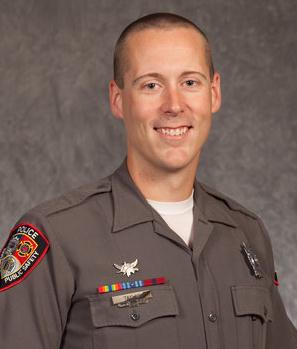
Riverside Officer Dies After Lightning Strike In Joplin. The tragedies continue to mount - in this case a police officer helping with clean-up and recovery efforts in Joplin, Missouri struck by lightning. The
Kansas City Star has the details: "
The Riverside police officer struck by lightning while helping with the Joplin tornado died this morning at a Springfield hospital. Jefferson “Jeff” Taylor, who volunteered to go to Joplin, was 31 years old. He is the first Riverside officer ever to die in the line of duty. “We are heartbroken,” Riverside Police Chief Greg Mills said today in a statement. “Our department, our community and law enforcement as a whole have lost a dedicated professional doing what he did best — helping those who were in need. The fragility of life gives way to the enduring spirit Jeff showed to us all. Our department will never be the same.” Taylor was one of a dozen emergency responders from Riverside to rush to Joplin after the tornado hit May 22. The following day, as thunderstorms moved through the area, lightning struck the ground near where he was working. Public safety officers performed CPR and stabilized him at the scene. Taylor later underwent successful skin graft surgery and was being treated for other complications when he died at 9:25 a.m. at St. John’s Hospital."

.
Southcoasttoday.com has the story: "
Dorothy Gale, after riding a tornado into the land of Oz, famously says, "Toto, I've a feeling we're not in Kansas anymore." We're not in Kansas, either, SouthCoast, but we do have tornadoes. Several touched down in Western Massachusetts on Wednesday, leaving at least four people dead, dozens injured and vast, almost incomprehensible destruction. The tornado watches Wednesday afternoon and early evening were right here in Plymouth and Bristol counties. Only by the vagaries of the swirling soup of clouds and storms did they form to our west Wednesday and not on our doorstep. The last time people died from a tornado in Massachusetts was May 29, 1995, in Great Barrington on the western border with New York. The deadliest recorded tornado in the state was on June 9, 1953, when 94 people were killed around Worcester. NOAA says Massachusetts averages two per year, going back to 1950, with none reported since 2008. The threat of tornadoes in SouthCoast is statistically small, smaller than hurricanes. Despite that statistical insignificance, the impact of these weather monsters marching through our lives is anything but."
Enhanced Fujita Scale. You hear a lot about the "EF-scale" for rating tornado strength. The tornado that struck the suburbs of Minneapolis recently was a strong EF-1, with pockets of EF-2 damage. In contrast the super-tornado that smashed across Joplin, Missouri was an EF-5, with estimated winds in the 200-250 mph range. Several years ago researchers went back and modified the original Fujita scale to make it more accurate and reliable. If you're interested in learning more click here to see more details from
NOAA:
"The Enhanced F-scale still is a set of wind estimates (not measurements) based on damage. It uses three-second gusts estimated at the point of damage based on a judgment of 8 levels of damage to the 28 indicators listed below. These estimates vary with height and exposure.
Important: The 3 second gust is not the same wind as in standard surface observations. Standard measurements are taken by weather stations in open exposures, using a directly measured, "one minute mile" speed."
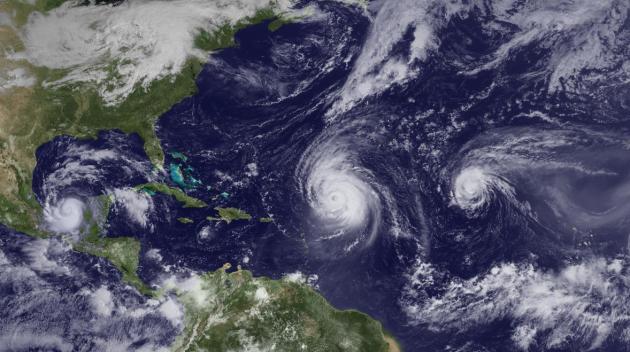
NOAA Hurricane Outlook Indicates An Above-Normal Atlantic Season. Ocean water temperatures are running warmer than average in the Atlantic and Caribbean. La Nina patterns tend to favor more hurricanes (less wind shear over the tropics), but La Nina is forecast to weaken over the summer, we may slide into a weak El Nino pattern by the end of 2011, so the implications for hurricane season are still very much up in the air. But
NOAA and SPC are predicting an "above average" year for hurricanes: "
The Atlantic basin is expected to see an above-normal hurricane season this year, according to the seasonal outlook issued by NOAA’s Climate Prediction Center – a division of the National Weather Service. Across the entire Atlantic Basin for the six-month season, which begins June 1, NOAA is predicting the following ranges this year: - 12 to 18 named storms (winds of 39 mph or higher), of which:
- 6 to 10 could become hurricanes (winds of 74 mph or higher), including:
- 3 to 6 major hurricanes (Category 3, 4 or 5; winds of 111 mph or higher)
Each of these ranges has a 70 percent likelihood, and indicate that activity will exceed the seasonal average of 11 named storms, six hurricanes and two major hurricanes. “The United States was fortunate last year. Winds steered most of the season’s tropical storms and all hurricanes away from our coastlines,” said Jane Lubchenco, Ph.D., under secretary of commerce for oceans and atmosphere and NOAA administrator. “However we can’t count on luck to get us through this season. We need to be prepared, especially with this above-normal outlook.”
Climate factors considered for this outlook are:
- The continuing high activity era. Since 1995, the tropical multi-decadal signal has brought ocean and atmospheric conditions conducive for development in sync, leading to more active Atlantic hurricane seasons.
- Warm Atlantic Ocean water. Sea surface temperatures where storms often develop and move across the Atlantic are up to two degrees Fahrenheit warmer-than-average.
- La Niña, which continues to weaken in the equatorial Pacific Ocean, is expected to dissipate later this month or in June, but its impacts such as reduced wind shear are expected to continue into the hurricane season."
Midnight's Solar Eclipse.
NASA has the details of this amazing photo taken in the Arctic: "
On June 1, the shadow of the New Moon was cast across a land of the midnight Sun in this year's second partial solar eclipse. This picture of the geocentric celestial event above the Arctic Circle was taken near midnight from northern Finland's Kaunispää Hill in Lapland. Of course the region's reindeer were able to watch as both Moon and Sun hugged the northern horizon just above a cloud bank. Also visible from parts of Alaska and Canada, the eclipse began at sunrise in Siberia and northern China at 19:25 UT, ending about 3.5 hours later north of Newfoundland in the Atlantic Ocean. Remarkably, just one lunation later, on July 1 the New Moon's shadow will again reach out and touch the Earth in a partial solar eclipse, limited in visibility to a relatively small area in the Antarctic Ocean. July's eclipse will be followed by the fourth and final partial solar eclipse of 2011 on November 25. That eclipse will be seen from a southern land of the midnight Sun."
First 90. In the "warm sector" of an unusually strong storm the mercury hit 91 in the Twin Cities, 96 at Rochester. St. Cloud registered a Friday high of 86 at St. Cloud, while residents of Grand Marais shivered through a "high" of 56.
Paul's SC Times Outlook for St. Cloud and all of central Minnesota:
TODAY: Bright sun, less humid. Winds: West/Northwest 10-15. High: 79
SATURDAY NIGHT: Mostly clear and comfortably cool. Low: 58 (dry for
SUNDAY: Plenty of sun, PM showers and T-showers up north (best chance of 1-2 hours north of Little Falls). Probably dry in the St. Cloud metro area. Winds: Southeast 7-12. High: near 80
MONDAY: Unsettled, passing T-storms more likely. Low: 62. High: 82
TUESDAY: Hot sun, T-storms northern MN. Low: 64. High: 86
WEDNESDAY: Steamy and hot, PM T-storm possible. Low: 69. High: 89
THURSDAY: Mix of clouds and sun, warm. Low: 67. High: 84
FRIDAY: More showers & T-storms likely. Low: 64. High: near 80
Daunting Statistics
Of the 515 tornado-related deaths in 2011, 47% died in mobile homes. We need a better solution for people living in manufactured housing. The only way to ensure survival is easy (immediate) access to a shelter or basement. According to SPC 2008 was the last strong La Nina year; 1,692 tornadoes touched down. In fact of the 15 largest tornado outbreaks from 1880-1990, 14 were La Nina or ENSO-neutral years. Both the 1974 "Super Outbreak" and the 1999 Oklahoma City F-5 tornado (portable Doppler measured sustained winds of 316 mph, the strongest ever measured on the face of the Earth) were La Nina years. We're just now beginning to appreciate the profound link between the oceans & the atmosphere.
A quiet Saturday is shaping up, enough sun for 80 with a welcome dip in humidity as winds blow from the west. Beware; a Painful Sunburn Alert is in effect until further notice. Much of Sunday looks sunny and lukewarm south of St. Cloud; a twist of cold air aloft may spark a few PM showers & T-showers up north on Sunday.
After a tentative spring the maps (finally) look like summer: more 80s next week; midweek storms. 16 tornado reports so far in Minnesota this year. Looks like another "very active" summer.
Mitt Romney: Humans Contribute To Global Warming. Hold the presses. Finally, a Republican candidate with the courage to admit the obvious: a nearly 40% increase in greenhouse gases is having an impact on the atmosphere. I give him a lot of credit for swimming upstream, but (slowly) I sense the tide is turning.
CBS News has the story: "
Republican presidential candidate Mitt Romney broke with many in his party on Friday when he said he believes humans have contributed to global warming. "I believe the world is getting warmer, and I believe that humans have contributed to that," said at a New Hampshire town hall meeting, according to Reuters. There is widespread consensus within the scientific community that the earth warming and that human beings are at least partially responsible. But many Republicans dispute that conclusion, including Oklahoma Sen. James Inhofe, the top Republican on the Senate Environment and Public Works Committee. Inhofe has suggested that global warming is a hoax that "started in the United Nations and the ones in the United States who really grab a hold of this is the Hollywood elite." Romney reportedly said Friday that he believed the United States as well as foreign nations need to "reduce our emissions of pollutants and greenhouse gases," saying they "may be significant contributors" to climate change. As Reuters notes, one of 2012 GOP Romney's rivals, former House speaker Newt Gingrich, said last week that the push to address climate change is "the newest excuse to take control of lives" by "left-wing intellectuals." Gingrich had previously suggested that "our country must take action on climate change."
A Big Thumbs-Up For Renewable Energy. The
New York Times has the story: "
BRUSSELS — Governments around the world have pledged emissions cuts aimed at keeping global warming below levels that could set off runaway climate change. So what proportion of the low-carbon energy needed to meet those goals will come from sources like the wind, sun and waves? Most renewable sources are abundant, practically inexhaustible and far more climate friendly than fossil fuels. Some companies making equipment to harness these energies are growing rapidly. Last month, experts advising the United Nations said renewable sources could deliver nearly 80 percent of world’s total energy demand by the middle of the century. That report, by the Intergovernmental Panel on Climate Change — the most authoritative body of experts, scientists and engineers specialized in climate change — was a welcome signal for an industry that has faltered in previous decades after government subsidies dried up and lower-cost fossil fuels made their technologies uncompetitive. The report “is a big thumbs up for an industry that’s making huge advances in lowering costs and improving efficiency,” said Maja Wessels, global head of government affairs for First Solar, one of the largest makers of solar panels. “The experts have said that reaching high renewables targets will become very achievable.”
Taking Stock Of Climate-Change Skeptics.
NPR has an intriguing story: "
Last week on 13.7, I cited a Washington Post op-ed from Bill McKibben that lifted up the possible link between extreme weather and global climate change. (As it happens, a Yale forum was posted yesterday wherein eight climate experts comment on this possibility. It's an excellent resource.) I then went on to ask the question "What motivates climate-change deniers? When 170 comments had come in to my post, I promised that this week I would attempt to synthesize the answers. It's now at 859 comments, and Adam posted a splendid follow-up that's already garnered 473 comments. Since a blog-length synthesis would be impossible, here's a summary of the territory. The deniers themselves — many of whom, I learned, prefer to call themselves skeptics — invariably claim the same motivation: since the climate-change argument has been either grossly exaggerated or downright falsified, they weren't buying it. As to why it would be the case that scientists were exaggerating or lying, the typical opinions included a belief that the scientists were lining their pockets and/or in cahoots with Big Government to change America as we know it — that kind of thing.
Non-deniers offered a wider spectrum of inferences as to what motivates deniers/skeptics. Here are a number of their responses:
—The default setting of the American people is inertia. We tend not to favor things that require a change in our habits, let alone gluttonous creature comforts.
—There was a 10 minute lecture by Dr Gilbert of Harvard that explains this pretty well. He states that humans have evolved to react quickly to events that are Intentional, Immoral, Imminent, and Instantaneous. Global warming has none of these properties, whereas Terrorism has all of them. Hence we fear Terrorism but not Global Warming.
—It's something called "inferred justification"....Essentially people approach things with pre-determined beliefs and then seek out facts to validate their own views and ignore facts that don't support their views....This is why the respondents respond with tons of links. They don't care what the facts are, they just want their belief system validated.
—There's no one motivator, I don't think. For some it's politics — "If the liberals/hippies/Democrats are saying it's true, I must assert that it's false!" — and for others, in America at least, I suspect it's related to our deep (and deeply annoying) cultural bias against the very idea of expertise."
Science Deniers: Hand Over Your Cell Phones. A follow-up post from
NPR: "
I have a few friends who are more than a little fond of New Age philosophies. From alien visitations to the healing power of eskimo rituals, there isn't a far-out idea they haven't met and loved. We can get into pretty heated arguments sometimes about these beliefs. What is most frustrating for me is that, ultimately, it costs them nothing to hold fast to these crazy (in my opinion) ideas. There is no price for them to pay for believing that extraterrestrials built Stonehenge or that the spirit of prehistoric warriors can speak through living "channelers." They still enjoy the fruits of science, from iPads to modern medicine, even as they profess belief in ideas without any sound basis. This failure to walk-the-walk is also something seen in people who deny the weight of scientific evidence on a variety of topics. From creationists who deny the veracity of evolution to climate deniers who hold global warming is a hoax, there is vocal minority out there who see scientific activity as buffet of ideas. They believe they are free to choose which parts of scientific endeavor to believe and which parts to reject. But, in truth, their actions belie their words. Living in a culture saturated with science, they routinely accept its authority on matters of life and death. Only when the consequences of science appear remote are they willing to take their politically charged stands against mountains of evidence and decades of effort."
The Dangers Of Bone-Headed Beliefs. I'm not a big fan of tatoos, but in this I'm willing to make an exception. Richard Glover has an interesting post in the
Sydney Morning Herald: "
Surely it's time for climate-change deniers to have their opinions forcibly tattooed on their bodies. Not necessarily on the forehead; I'm a reasonable man. Just something along their arm or across their chest so their grandchildren could say, ''Really? You were one of the ones who tried to stop the world doing something? And why exactly was that, granddad?'' On second thoughts, maybe the tattooing along the arm is a bit Nazi-creepy. So how about they are forced to buy property on low-lying islands, the sort of property that will become worthless with a few more centimetres of ocean rise, so they are bankrupted by their own bloody-mindedness? Or what about their signed agreement to stand, in the year 2040, lashed to a pole at a certain point in the shallows off Manly? If they are right and the world is cooling - ''climate change stopped in the year 1998'' is one of their more boneheaded beliefs - their mouths will be above water. If not … OK, maybe the desire to see the painful, thrashing death of one's opponents is not ideal. But, my God, these people are frustrating. You just know that in 20 years' time, when the costs of our inaction are clear, the climate deniers will become climate-denial-deniers. ''Who me? Oh, no, I always believed in it. Yes, it's hard to understand why people back then were so daft. It's so much more costly to stop it now.'
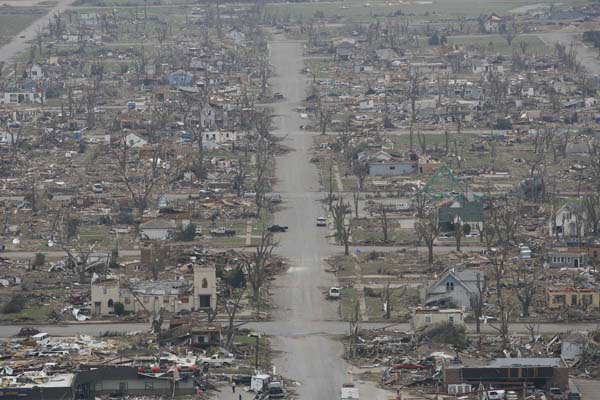 The C-Word.
The C-Word. Heidi Cullen, formerly of the Weather Channel, now a climate scientist at Climate Central, has a story in the
Huffington Post: "
The bottom line is that two of the key ingredients that go into making a tornado are expected to change as a result of global warming -- water vapor (moisture in the atmosphere) and wind shear (changing wind speed and direction with height). Thanks in part to warmer oceans, water vapor has already increased about 4% and it will continue to increase as the planet warms -- providing more fuel for storms. But wind shear may decrease and that could mean fewer tornadoes. So which influence wins out -- increasing water vapor or decreasing wind shear? We don't know yet. But even though we don't have all the answers -- and maybe never will -- we do know enough to act. And that is really the bigger point, the one I try to bring home when the phone rings. The recent National Research Council's "America's Climate Choices" report advised Congress that we know enough to get started on preparing for climate change and preventing the most severe consequences, and we need to get started right away. Almost anything we do to protect ourselves in the future from this hotter world we're creating, will also protect us right now from many of the extremes Mother Nature throws at us. We can't afford to wait. Yet, despite this recent report, and despite all we do know about climate change, the topic has become the C-word in Washington, D.C. Just as the term "global warming" fell out of favor, the term "climate change" is now one that few in our nation's capital dare bring up in conversation, much less in legislation. Budgets for climate research have been threatened and now a nominee for Commerce Secretary is garnering opposition in large part because of his stance on environmental issues, including global climate change."
Yep, It's Safe To Start Fretting About Carbon Again. Ezra Klein has a story in the
Washington Post: "
In 2008 and 2009, the world was in the grips of a brutal recession and there wasn't much to be cheerful about. There was, however, one tiny consolation: Greenhouse gas emissions were plummeting, thanks to reduced energy use, and it looked like all those worries about global warming could be put on hold for a bit — or at least temporarily postponed. But the reprieve turned out to be more temporary than expected. The International Energy Agency has just released new data showing that carbon dioxide emissions shot way back up in 2010, thanks to rapid growth in developing countries. Since this is Ezra’s blog, here’s the obligatory graph.....Unfortunately, climate sensitivity is a function of basic physics and we don't have a lot of wiggle room there. The rough consensus among climatologists is that every doubling of CO2 will warm the Earth around 3°C. Yes, that figure has been largely derived from computer modeling, but there are good external reasons to believe those models. For one, scientists can check the models against natural experiments — looking, for instance, at how the Earth's temperature responds to things like the massive Pinatubo eruption in 1991. And paleoclimatologists can look at how the Earth's climate has reacted in the past to changes in carbon-dioxide (in the past, those changes were often due to shifts in the Earth's orbit rather than coal-fired power plants, but the effect on Earth's average temperature was still measurable). All of this research has tended to converge around one answer — double CO2 in the air, get about 3°C of warming."
Jeff Jacoby Pollutes Debate With Climate Fallacies. Media Matters reports on a growing controversy over a recent Boston Globe
column: "
In a Boston Globe column titled "Cooler heads prevail against climate panic," Jeff Jacoby denounces what he deems to be "climate fearmongering" about the dangers posed by unchecked greenhouse gas emissions. I agree that hyperbole is often damaging to public discourse, however Jacoby should acknowledge that misleading and fallacious claims are of equal concern. We could start with his own suggestion that those concerned about global warming engage in "end-of-the-world doomsaying" akin to Harold Camping's apocalypse prophesies. As a side note, Rush Limbaugh, who's known for his thoughtfulandmoderaterhetoric, said the same thing a couple weeks ago. In his column, Jacoby forwards the claim that "rising carbon-dioxide levels" are not "anything to fear," citing physicist William Happer's assertion that "carbon is the stuff of life." Jacoby also quotes from Happer's statement that "about fifty million years ago" CO2 levels were "much higher than now. And life flourished abundantly." (For his part, Happer thinks that those concerned about climate change are far worse than Harold Camping -- they're more like Nazis.) Jacoby's argument misrepresents the anxieties that so many, including the national science academies of 13 nations and the U.S. military, have about climate change. The existence of Earth or of life itself is not in question. Indeed, if that's the standard for taking action, then I can't think of any tragedy or injustice that would merit concern. Rather, as scientists contacted through the Climate Science Rapid Response Team explained, climate change demands attention because it is altering the environments in which our societies operate faster than we are adapting, and the transition may be difficult, expensive, and painful in many cases -- all the more so if nothing is done to slow the changes and mitigate our vulnerabilities."
Climate Change Expert To Study Global Warming And Wild Prairie Storms. An article from the
Canadian Press: "
REGINA — Storms, floods, droughts and forest fires on the Prairies have caught the attention of a climate change expert at the University of Regina. David Sauchyn, a geography professor and research scientist, has been given $1.25 million from the International Development Research Centre in Ottawa to study the effect of climate change on rural agricultural communities. "All the best science that we have suggests that as you heat up the Earth, you're going to expect more violent weather and that's the big effect of global warming, so that's what we're studying," Sauchyn said Thursday. "We're going to focus on, first of all, to what extent can we explain our wild weather in terms of global warming? We still don't know. And, secondly, if we expect more of this kind of crazy weather, what can we do about it, especially the people who are most vulnerable?" Sauchyn said people in cities can always duck into office buildings or their homes when the weather turns violent. But it's not that simple for farmers and First Nations. "They still have to make a living off the land and if there's drought and flooding and fires, they're severely impacted." The money is part of a $2.5-million international project on vulnerability and adaptation to climate extremes in the Americas."
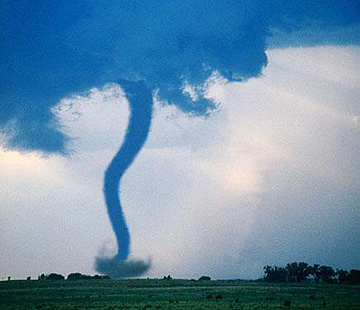

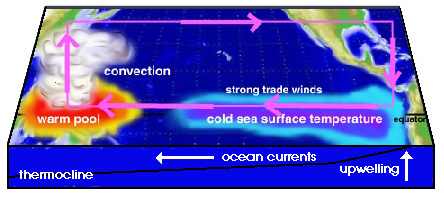
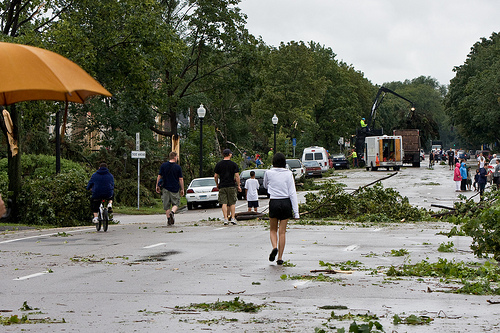
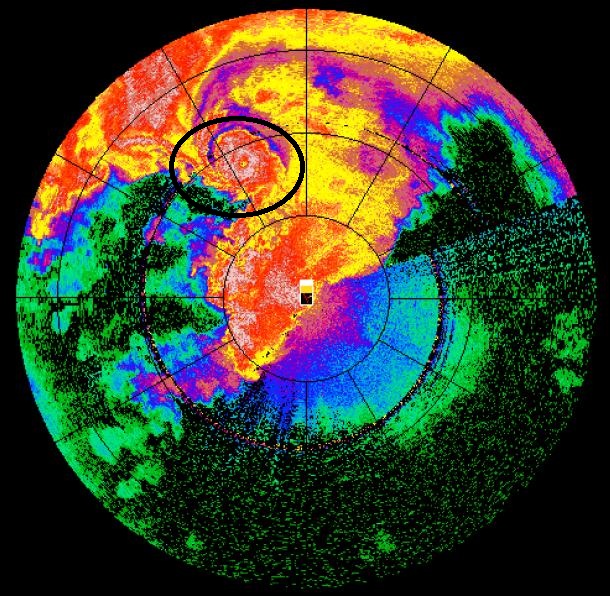


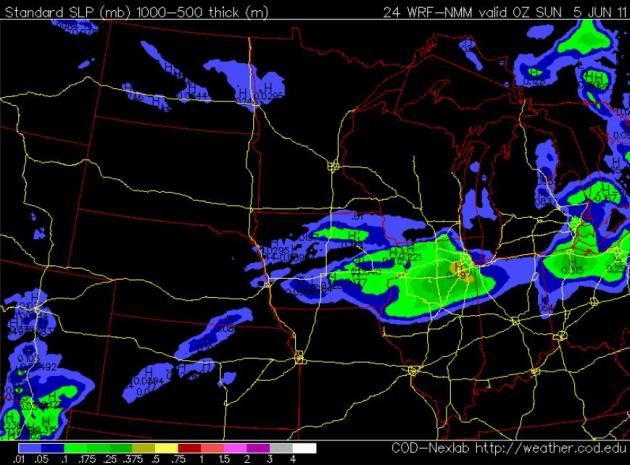
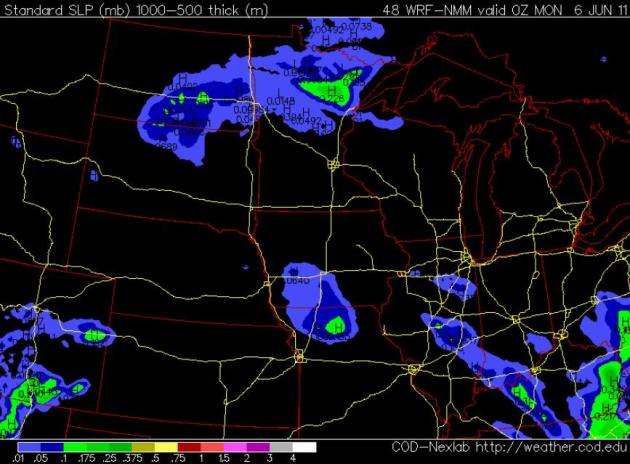
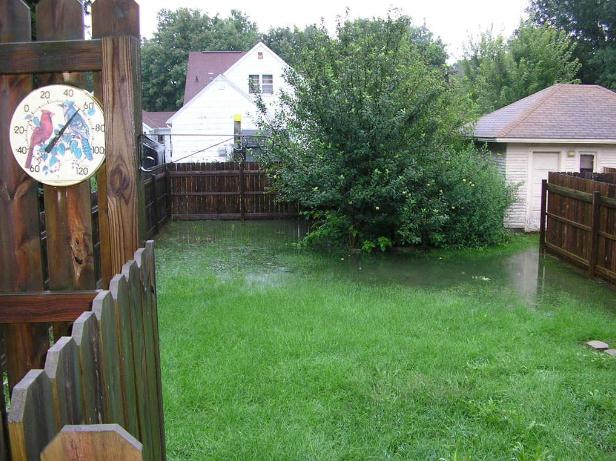

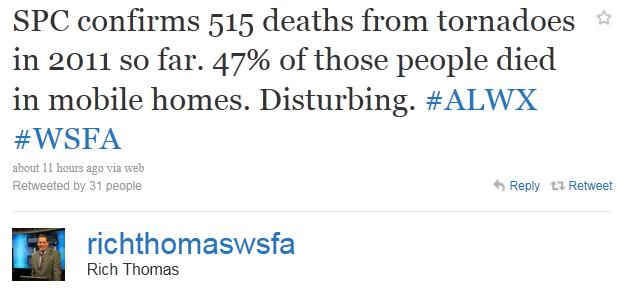
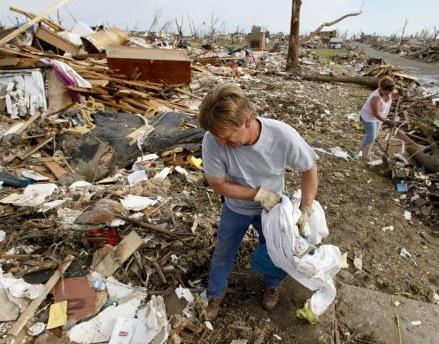





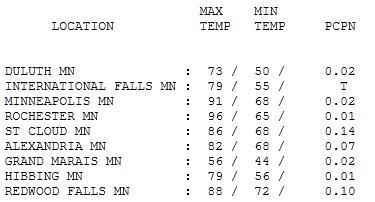
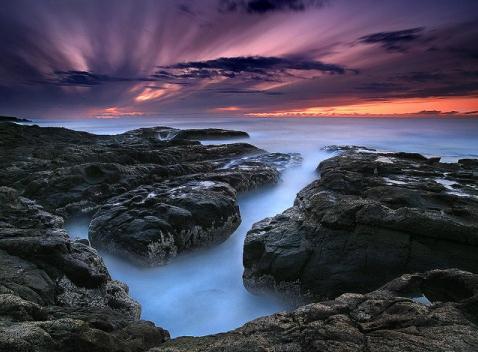
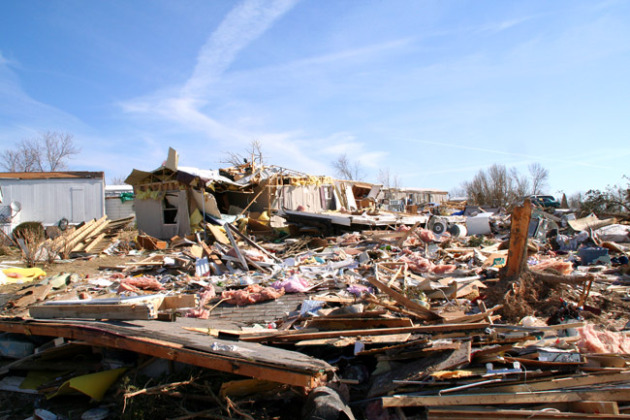



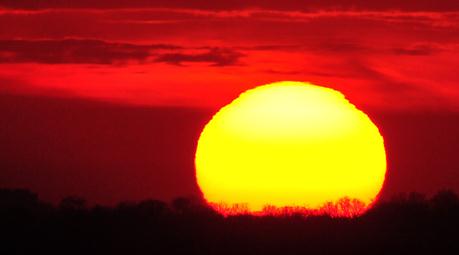


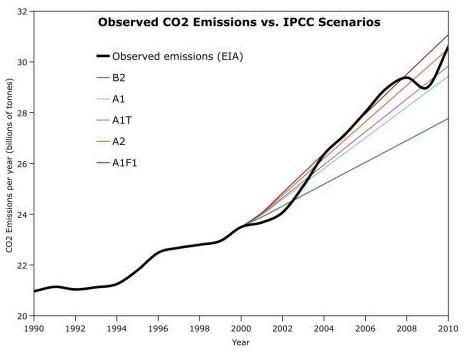
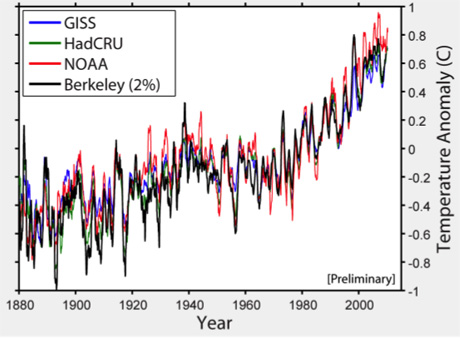

No comments:
Post a Comment